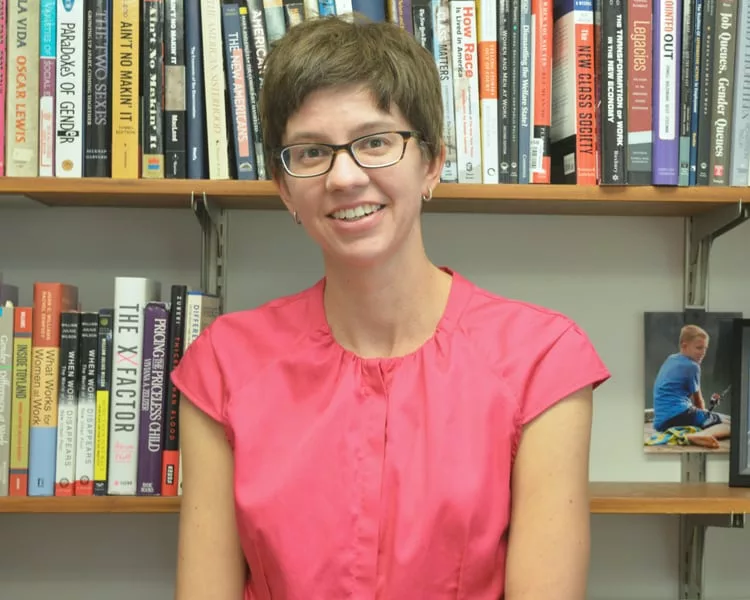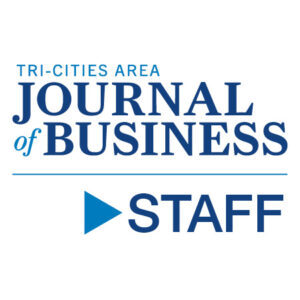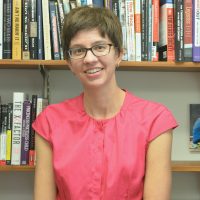
Home » WSU looks to Muslim countries to find out how to attract women to engineering
WSU looks to Muslim countries to find out how to attract women to engineering

September 16, 2016
A new study co-led by researchers at Washington State University aims to understand why significantly more women study engineering in some predominantly Muslim countries than in the United States.
The study seeks to identify what motivates women to pursue engineering in Jordan, Malaysia, Saudi Arabia and Tunisia, where participation rates by women are as high as 50 percent.
That’s compared to the U.S. where about 15 percent to 20 percent of engineering students are women, according to a WSU news release.
“The U.S. government, industry and professional societies have allotted tremendous resources to increase women’s participation in engineering — with minimal impact,” said Julie Kmec, professor of sociology and Edward R. Meyer Distinguished Professor of Liberal Arts at WSU and one of the study’s principal investigators.
The researchers said they hope their work leads to greater understanding of the constraints that shape women’s participation in engineering and new ways to increase the number of women studying engineering in the U.S.
A two-year study is funded by $589,200 National Science Foundation grant.
Engineer shortage weakens U.S.
The shortage of engineers in America weakens the country’s position as a global market leader and limits its capacity to solve key infrastructure challenges, said Jennifer DeBoer, assistant professor of engineering education at Purdue University and a principal investigator with Kmec.
Gaining a competitive edge in sectors that rely on science and technology depends on identifying the factors that inhibit participation of competent and interested women in engineering fields, the researchers said.
“Although women in the U.S. earn more undergraduate degrees than men, they receive fewer engineering degrees and hold fewer engineering faculty positions and fewer private sector engineering jobs than men,” Kmec said.
“The paradox is that women’s engineering participation has expanded significantly in many predominately Muslim countries,” said Nehal Abu-Lail, an associate professor in the Gene and Linda Voiland School of Chemical Engineering and Bioengineering at WSU and a co-principal investigator on the project. “This expansion is likely due to cultural and financial norms as well as national educational paradigms that look so different from those adopted in the states.”
The WSU and Purdue researchers are collaborating with a colleague at Western Washington University to identify the “micro- and macro-level facilitating conditions” behind the relative numbers of women engineers in Jordan, Malaysia, Saudi Arabia and Tunisia.
They will conduct focus groups with three distinct sets of women: engineering students, engineering faculty and engineers in industry.
“These micro- and macro-facilitating conditions refer to what’s going on for individual women at a given time,” DeBoer said. “Macro conditions are the policy-level conditions, the cultural environment, the overall political climate for women’s rights — for example, what labor laws exist to require equal treatment,” she said.
Statistics surprising, researchers say
Women’s engineering participation in predominantly Muslim countries is surprising for reasons beyond just the absence of collective national STEM-focused (science, technology, engineering, math) programmatic efforts to increase representation, said Kmec in a release.
“Women in (predominantly Muslim countries) typically experience social, political and economic restrictions. In contrast, certain indicators suggest women’s status in the United States is among the highest in the world,” she said.
Also a co-principal investigator on the project is Ashley Ater Kranov, an adjunct associate professor in the WSU School of Electrical Engineering and Computer Science and interim vice dean of electronic and distance learning at Princess Nourah bint Abdulrahman University in Riyadh, Saudi Arabia. President of the consulting firm Global Professional Skills Assessment, she researches direct methods to teach and measure the professional skills necessary for 21st century engineering workplace success and how to increase gender equity in engineering.
Local News Education & Training
KEYWORDS september 2016






